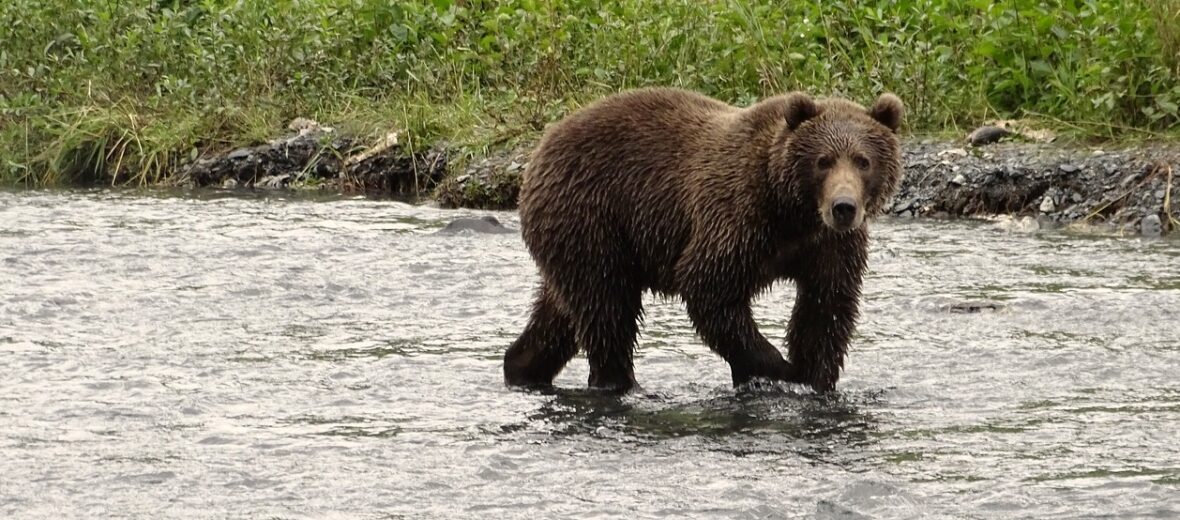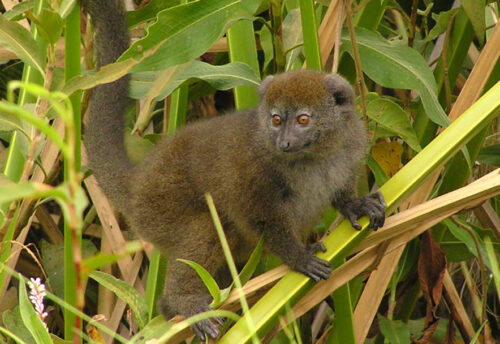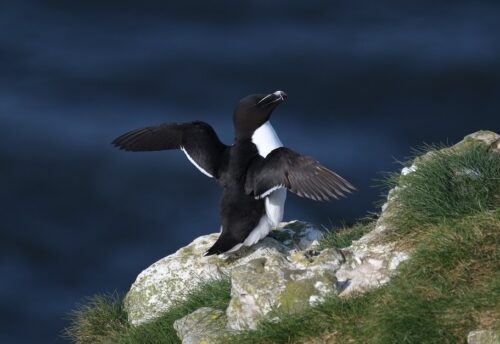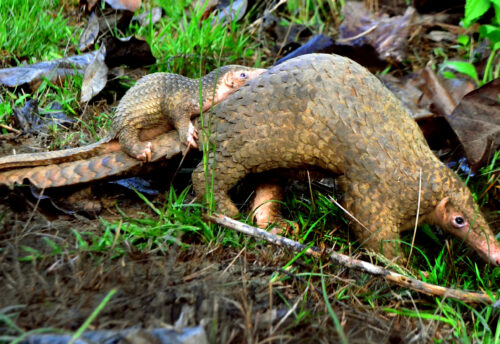
The Kodiak bear, aka Kodiak brown bear, or the Alaskan brown bear, lives on the islands of the Kodiak Archipelago in southwestern Alaska. These are the largest recognized subspecies of brown bear. They are also 1 of the 2 largest bears alive today, the other being the polar bear, of course. Kodiak bears have been isolated from other bears since the last ice age; about 12,000 years now. There are about 3,500 Kodiak bears; that equals about 0.7 bears per square mile of their habitat. These bears are listed as Least Concern by the IUCN. This article is on special request by David.
First the Stats…
Scientific name: Ursus arctos middendorffi
Weight: Up to 1,500 lbs.
Length: Up to 8 feet
Height: Up to 5 feet, at the shoulder
Lifespan: Up to 35 years
Now on to the Facts!
1.) Kodiak bears are considered the largest bears in the world. The males, when standing upright, can measure up to 10 feet tall!
2.) Male bears are called boars, females are called sows, and young bears are called cubs.
3.) These bears are diurnal (active during the day), but when forced to compete with other bears for food they will switch to a nighttime lifestyle (nocturnal).
4.) Kodiaks have the uncanny ability to hibernate for 6 – 8 months out of the year! What is even more fascinating is that they can sleep this long without having to eat, drink, or go to the bathroom!
5.) When the Kodiak natives would hunt bears for food, tools, and clothing, they wouldn’t use the head of the bear. Bear heads were left in the forest as a sign of great respect. It was thought that by leaving the head behind, the bear’s spirit could rise peacefully.
But wait, there’s more on the Kodiak bear!
6.) Being lazy by nature, which is probably because they get so much sleep, these bears typically eat berries and grass. They seldom hunt for their food.
7.) Brains, flesh, and eggs are the favorite parts of the salmon they eat; when they do hunt. The internal organs of deer, elk, and cattle are eaten first when one is killed or scavenged.
Did you know…?
Around 25% of Kodiak cubs die before leaving their mother. This is mainly due to cannibalism by the adult male bear.
8.) Cubs are born in the den during January or February. They weigh less than 1 lb. at birth and are nearly hairless, with closed eyes. They will suckle for several months and emerge from the den in May or June, weighing 15 – 20 lbs.
9.) Standard litter sizes are about 2 – 3 cubs. Sometimes females will adopt other cubs, increasing the litter size to 5 – 6 cubs.
10.) Bears who leave their mother at around 3 – 5 years old are sometimes called delinquents that typically cause trouble with humans and thus have a high mortality rate.
Now a Short Kodiak Bear Video!
Also, check out the Critter Science YouTube channel. Videos added frequently!
Want to suggest a critter for me to write about? Let me know here.



